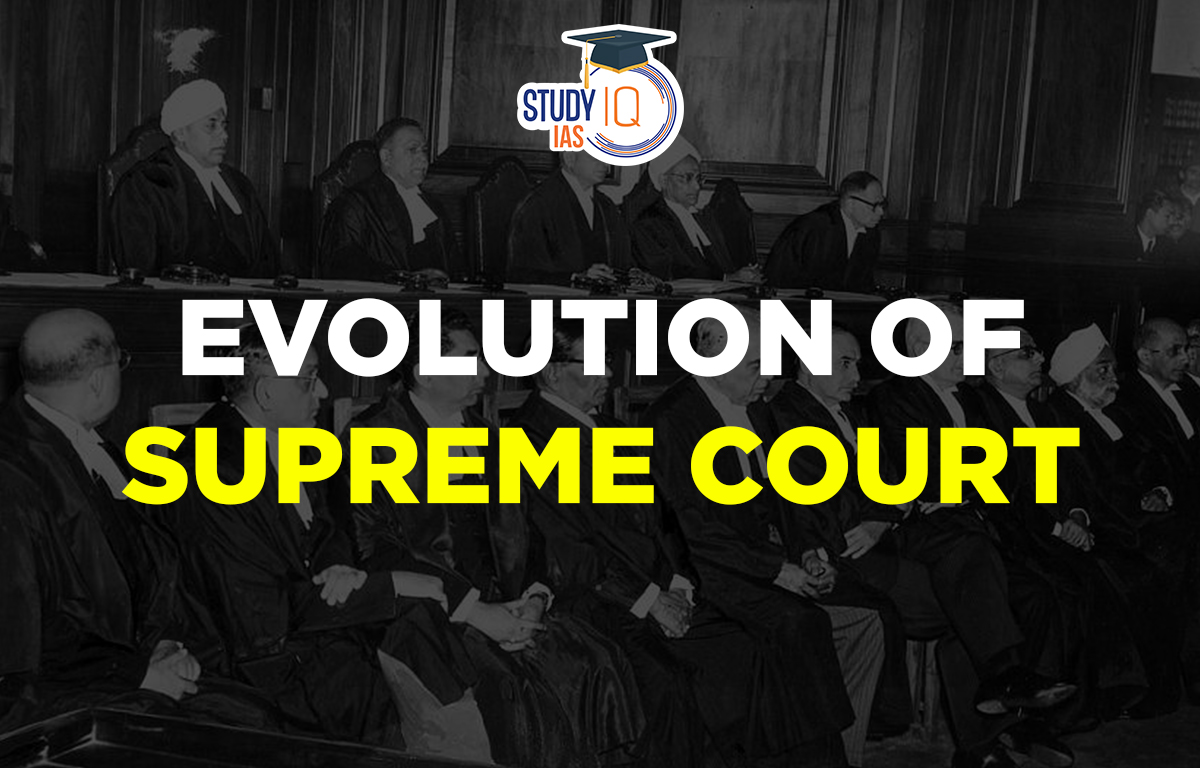Table of Contents
Context: The Supreme Court of India hosted its first-ever celebration of the 73rd anniversary of its recently.
Evolution of Supreme Court Background
- Set up: The Supreme Court of India came into existence on January 28, 1950, two days after India became a sovereign democratic republic.
- It replaced both the Federal Court of India and the Judicial Committee of the Privy Council which were at the apex of the Indian court system.
- Location: It was inaugurated in the Chamber of Princes in the Parliament building which was the home to the Federal Court of India for 12 years preceding the Supreme Court’s establishment.
- The Parliament House served as the home of the Supreme Court for years until the apex court got its own building in 1958.
The Inauguration
- The inauguration was presided over by the Judges of the Federal Court. The first Chief Justice of India was H. J. Kania. The function was attended by the Chief Justices of the High Courts of various states.
- Apart from the Attorney General for India, M.C. Setalvad, Advocate Generals of various states were also present. It was also attended by other Indian and foreign dignitaries.
- The inaugural proceedings ensured the publishing of the rules of the court and the names of all the advocates and agents of the Federal Court were brought on the rolls of the Supreme Court.
How Supreme Court has changed over the years?
- Strength: The original Constitution of 1950 had a provision for a Supreme Court with a Chief Justice and 7 puisne judges. The Parliament was given the power to increase this number.
- Initially, all the judges of the apex Court sat together to hear the cases presented before them.
- Parliament increased the number of Judges from 8 in 1950 to 11 in 1956, 14 in 1960, 18 in 1978, 26 in 1986, 31 in 2009, and 34 in 2019 (current strength), due to the increase in the number of cases.
- Benches: The increase in the number of judges allowed them to sit in smaller benches of two and three. They sit in larger benches of 5 and more only when required to settle a difference of opinion or controversy.

Constitutional Status of Supreme Court
- The Supreme Court of India was constituted as per Chapter IV of Part V of the Constitution of India, titled “The Union Judiciary“.
- Articles related to Supreme Court:
- Article 124: Establishment of Supreme Court
- Article 129: Supreme Court as the Court of Record
- Article 131: Original Jurisdiction of the Supreme Court
- Articles 132, 133, 134: The Appellate Jurisdiction of the Supreme Court
- Article 135: Power of the Federal Court is provided to the Supreme Court
- Article 136: Special leave to Appeal to the Supreme Court
- Article 137: Review Power of the Supreme Court is explained
- Article 138: Expanding the jurisdiction of the Supreme Court
- Article 139: powers to issue certain writs
- Article 140: Ancillary powers of Supreme Court
- Article 141: The Law making power of the Supreme Court


 5 lakh year Old Workshop found in Mangar...
5 lakh year Old Workshop found in Mangar...
 Economic Potential of Healthy Ageing in ...
Economic Potential of Healthy Ageing in ...
 Plastic Crisis in India and Waste Manage...
Plastic Crisis in India and Waste Manage...





















